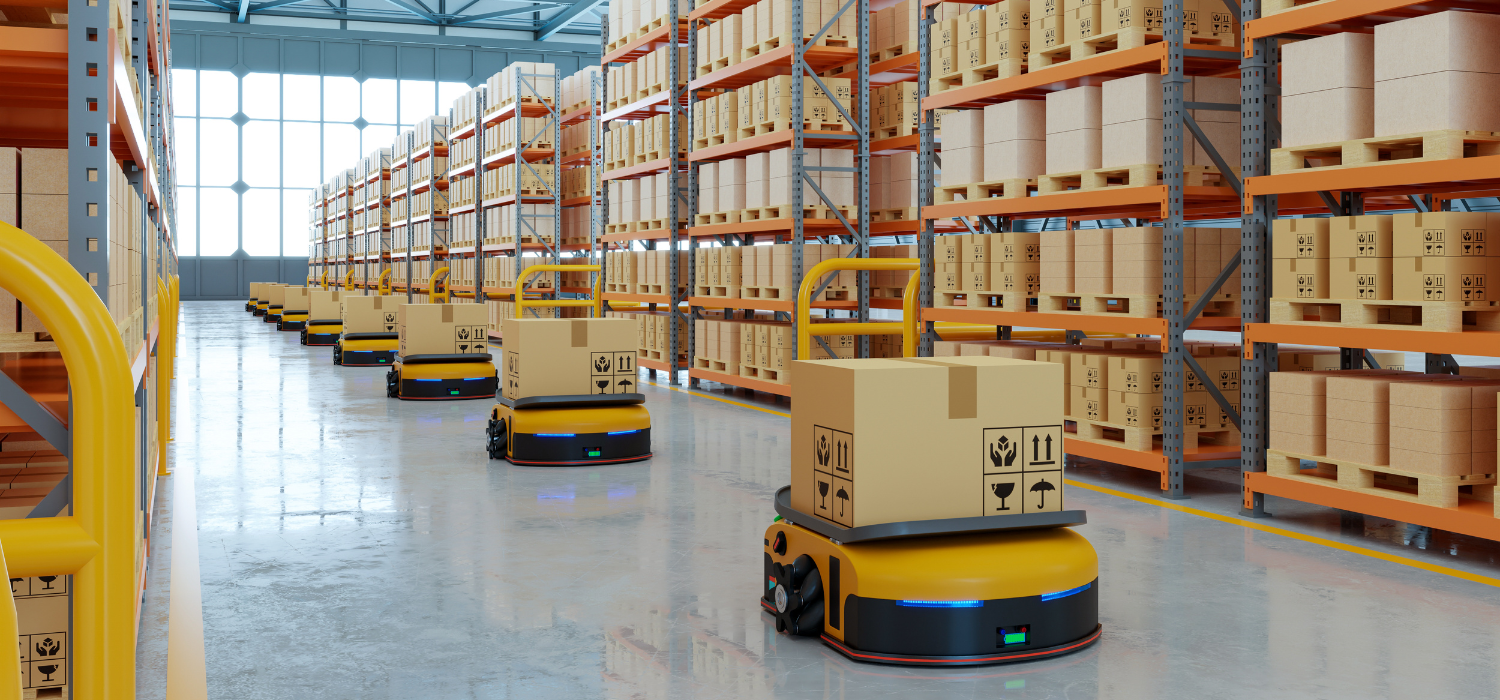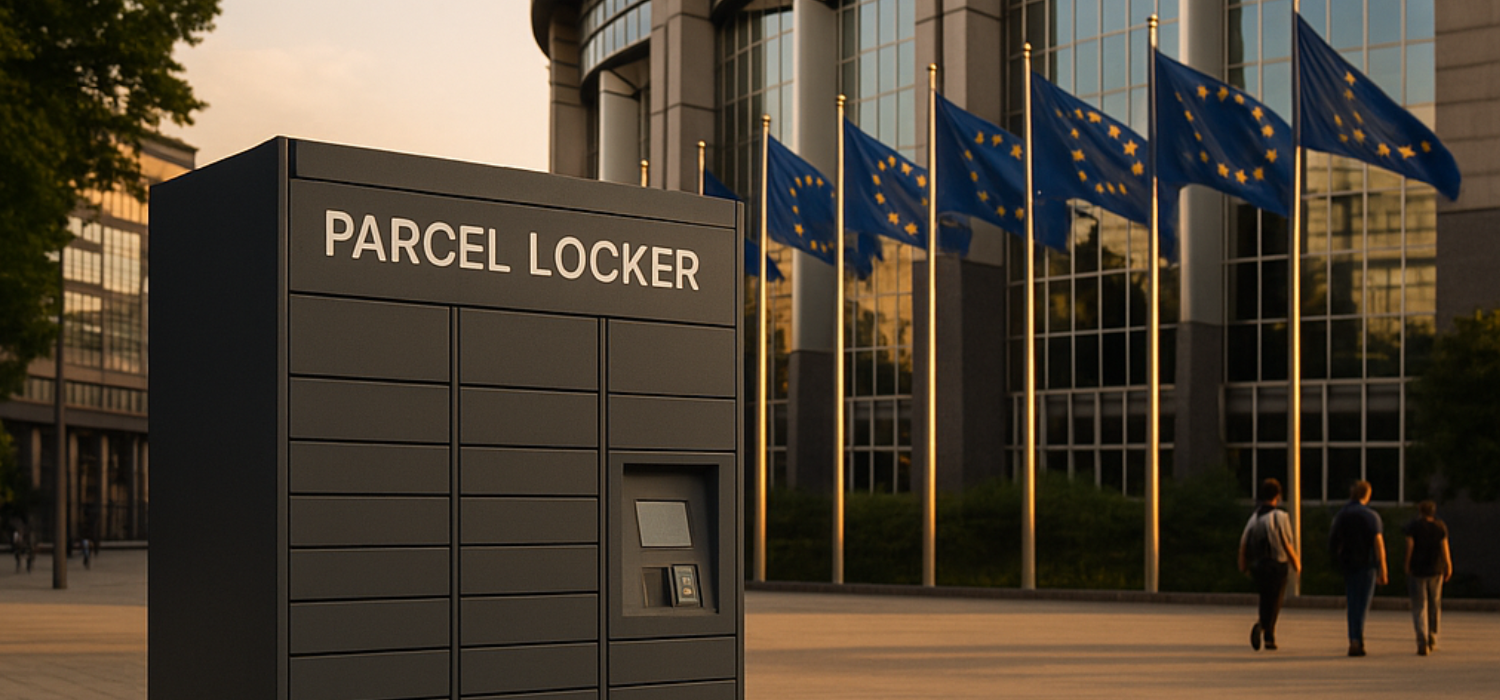Robots in warehouses, process automation and increasingly digitised supply chains: these are the trends that are changing logistics. And confirmation comes from Amazon: according to a Wall Street Journal survey reported by several Italian media outlets, more than one million robots now operate in the e-commerce giant’s warehouses, a number that is increasingly close to that of human employees (approximately 1.5 million).
This overtaking could soon become a reality and mark the beginning of a new era: automation is no longer just a support, but a central element in the management of logistics operations.
While this transformation allows for increased productivity within warehouses, it also raises new challenges for the entire supply chain, especially with regard to the last mile, the most delicate and costly part of deliveries. This is where urban hubs come into play, technological infrastructures designed to make distribution in cities more sustainable and efficient.
In this article, we will analyse the figures and implications of robotisation in warehouses, the impact on e-commerce and logistics operators, and finally the strategic role of urban hubs as an indispensable complement to increasingly automated logistics.
The advance of robots in logistics: the Amazon case
Amazon introduced robotics into its warehouses back in 2012, when it acquired Kiva Systems for £775 million. Initially, the robots were used to move bulk goods, a repetitive and physically demanding job for workers. Today, however, automated systems not only transport products, but also handle packaging, sorting and even complex operations thanks to advanced robots such as Vulcan, equipped with a ‘sense of touch’ capable of picking up delicate items almost as a human would.
According to the Wall Street Journal, approximately 75% of the Seattle giant’s global deliveries are now supported by robotic systems. The result is unprecedented productivity: in the United States, the number of parcels shipped per employee has risen from around 175 in 2015 to almost 3,870 today.
Automation and human labour, ongoing transformations
Automation has not only improved efficiency, but also changed the nature of work. Many employees have been moved from manual tasks to supervisory and automated system management roles. However, the average number of warehouse workers in 2023 was the lowest in 16 years, a sign that part of the workforce has effectively been replaced. This demonstrates that automation brings opportunities but also new responsibilities for human capital management.
The impact of automation on e-commerce and logistics operators
Efficiency and new challenges in the supply chain
The Amazon case clearly highlights the advantages of robotics: reduced costs, increased productivity and ever faster order fulfilment times. However, for smaller e-commerce and logistics operators, replicating this level of automation is unrealistic. Innovation in warehouses is an important step forward, but it may not be enough if the final part of the chain – i.e. delivery in cities – remains slow, expensive and unsustainable.
Last mile: the real test
The so-called last mile, i.e. delivery to the final recipient of the goods, is now the most critical segment of logistics: it accounts for over 40% of the total cost of transport and has a direct impact on end customer satisfaction. Even the most automated companies have to contend with urban constraints such as traffic, emission limits and limited distribution space. For this reason, the real challenge for modern logistics is no longer just in centralised warehouses, but in cities.
Urban hubs: the strategic answer for the last mile
What are urban hubs and how do they work?
Urban hubs are consolidation and distribution centres strategically located within cities. Here, goods are collected and sorted before reaching their final recipients. In this way, instead of multiplying journeys and door-to-door deliveries, transporters can optimise routes and reduce the number of kilometres travelled.
The role of GEL Proximity in the proximity network
If warehouse automation is the driving force behind modern logistics, urban micro-hubs are the point of connection with cities. This is where GEL Proximity comes in, not only providing access to the largest European network of collection points and lockers with over 500,000 active points for the collection and return of goods, but also offering urban micro-hub orchestrator software: a technology designed to coordinate, optimise and scale new proximity logistics networks.
The orchestrator allows for the centralised management of the entire network of city micro-hubs, regardless of who manages them or the courier involved. This agnostic approach allows different infrastructures to communicate with each other, creating an integrated ecosystem that enables faster, more sustainable and collaborative deliveries. In practice, micro-hubs become smart nodes capable of receiving, sorting and redistributing parcels according to actual flows and the needs of the city.
Through the orchestrator, operators can integrate different players in the supply chain (couriers, last milers, cargo bikers, urban space managers or automated lockers) by synchronising data and processes in real time. For eCommerce, this means offering increasingly widespread and flexible delivery and collection options; for transporters, it means optimising routes, reducing operating costs and cutting down on the number of kilometres travelled.
The competitive advantage is twofold: on the one hand, urban distribution is optimised, reducing journeys and emissions; on the other, the experience of the end recipient is improved, as they can choose when and where to receive or collect a parcel.
In this sense, GEL Proximity’s urban micro-hub orchestrator is not only a support infrastructure, but a strategic enabler for city logistics, capable of transforming last-mile distribution into a more efficient, collaborative and sustainable service.
Why integrate urban hubs with your eCommerce or TMS
Cost reduction and greater sustainability
Centralising deliveries to an urban hub means reducing the number of trips made by couriers and lowering transport costs. But there’s more: fewer vehicles on the road also means less traffic and fewer emissions. For logistics operators and transporters, this translates into lower operating costs and a greater ability to comply with regulations on restricted traffic zones and emissions in cities.
Customer experience and faster delivery times
Urban hubs also offer an improved customer experience: thanks to an extensive network of collection points, recipients can choose where and when to collect their parcels, avoiding missed deliveries and reducing waiting times. For e-commerce businesses, this translates into a real competitive advantage, as speed and flexibility of delivery are now key criteria for users when making their choice.
Robots in warehouses and urban hubs in cities: two sides of the same revolution
Centralised automation and widespread distribution
The robotisation of warehouses and the spread of urban hubs are two complementary pillars. The former accelerates and standardises operations in large distribution centres; the latter makes delivery in cities more sustainable and intelligent. It is a balance between centralisation and efficiency on the one hand, and proximity and capillarity on the other.
Smarter logistics closer to the customer
Together, automation and urban hubs are shaping a new logistics model: faster, more sustainable and closer to the end customer. For e-commerce and transport companies, this means being able to offer services that combine the strength of large global platforms with the flexibility and efficiency of local distribution.
The fact that robots have overtaken humans in Amazon warehouses is not just a news item, it is a sign of an epoch-making transformation that will redefine the entire supply chain. But automation is not enough if it is not accompanied by a rethinking of urban logistics. Urban hubs, especially when integrated with technologies such as those offered by GEL Proximity, are the concrete answer to the challenges of the last mile.
Want to find out how urban hubs can improve your logistics? Contact us and integrate the technology that makes future deliveries more efficient and sustainable today.












